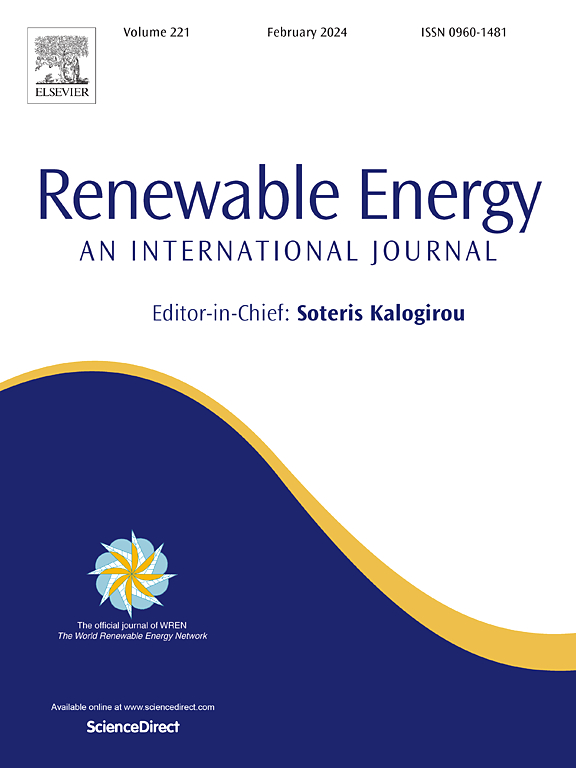A GIS-based assessment of the carbon emission reduction potential of the solar-enhanced char-cycling biomass pyrolysis process in China
IF 9.1
1区 工程技术
Q1 ENERGY & FUELS
引用次数: 0
Abstract
Bioenergy and solar energy are the two widely used renewable energies, which have great potential to satisfy the global energy demand. Solar enhanced char-cycling biomass pyrolysis (SCCP) was proposed to integrate bioenergy and solar energy, could be used to make bioenergy fully carbon-negative. A geographical information system (GIS) based method was used to assess the GHG reduction potential and biofuel production potential of SCCP in China. Existing datasets were used to obtain geographical potential and biomass resource amount. Process simulation was conducted to obtain the technical data. The geographical potential results showed that with a DNI (direct normal irradiance) threshold of 1400 kWh/m2, the national suitable area for SCCP plant construction was 3.25 % of the total national area, the total convertible biofuel potential ranges from 1.86E+06 to 1.94E+06 GWh with different concentrating solar technologies. When considering biochar sequestration, the GHG emission reduction potential increased further, the total GHG emission reduction potential increased from 13.97 Mt CO2 eq to 15.42 Mt CO2 eq. Notably, Yunnan has the highest GHG emission reduction potential per unit of energy when running the pyrolysis process with solar energy, which was −8.58 g CO2 eq/kWh. The results revealed that the SCCP process could further decarbonize biofuel production in China.
基于gis的中国太阳能增强炭循环生物质热解过程碳减排潜力评估
生物能源和太阳能是目前应用广泛的两种可再生能源,具有满足全球能源需求的巨大潜力。太阳能增强型炭循环生物质热解(SCCP)是将生物能源与太阳能相结合,使生物能源完全负碳的技术。采用基于地理信息系统(GIS)的方法对中国SCCP的温室气体减排潜力和生物燃料生产潜力进行了评估。利用现有数据集获取地理潜力和生物质资源量。进行了工艺模拟,获得了工艺数据。地理潜力结果表明,在DNI(直接正常辐照度)阈值为1400 kWh/m2的条件下,全国适合建设SCCP电站的面积为全国总面积的3.25%,不同聚光太阳能技术的可转换生物燃料总潜力范围为1.86E+06 ~ 1.94E+06 GWh。考虑生物炭固存后,温室气体减排潜力进一步增加,总温室气体减排潜力从1397 Mt CO2 eq增加到1542 Mt CO2 eq,其中云南在太阳能热解过程中单位能量温室气体减排潜力最高,为−8.58 g CO2 eq/kWh。结果表明,SCCP工艺可以进一步使中国的生物燃料生产脱碳。
本文章由计算机程序翻译,如有差异,请以英文原文为准。
求助全文
约1分钟内获得全文
求助全文
来源期刊

Renewable Energy
工程技术-能源与燃料
CiteScore
18.40
自引率
9.20%
发文量
1955
审稿时长
6.6 months
期刊介绍:
Renewable Energy journal is dedicated to advancing knowledge and disseminating insights on various topics and technologies within renewable energy systems and components. Our mission is to support researchers, engineers, economists, manufacturers, NGOs, associations, and societies in staying updated on new developments in their respective fields and applying alternative energy solutions to current practices.
As an international, multidisciplinary journal in renewable energy engineering and research, we strive to be a premier peer-reviewed platform and a trusted source of original research and reviews in the field of renewable energy. Join us in our endeavor to drive innovation and progress in sustainable energy solutions.
 求助内容:
求助内容: 应助结果提醒方式:
应助结果提醒方式:


